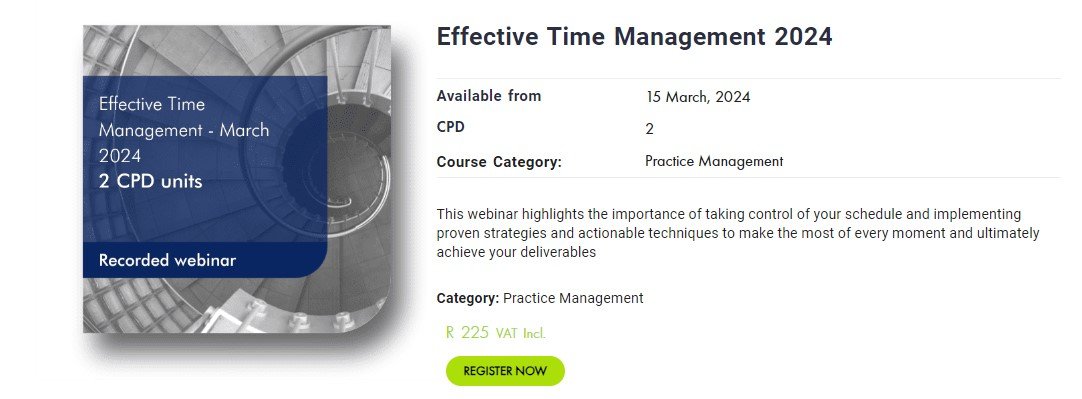9 steps to managing your time effectively
Effectively managing your time involves a combination of strategies, tools, and a mindset focused on productivity and balance. Here's how you can refine your time management skills for better efficiency and work-life harmony.
1. Start with a Clear Vision
Have a clear vision of your professional and personal goals. This vision acts as a north star, guiding your daily actions and decisions. Use it to prioritise activities that align with your long-term objectives, ensuring that your efforts are directed towards meaningful outcomes.
For example if you envision becoming a partner at your firm within the next five years, you should prioritise tasks and opportunities that enhance your leadership skills, deepen client relationships, and broaden your tax and auditing expertise.
2. Embrace SMART Goals
Setting SMART (Specific, Measurable, Achievable, Relevant, Time-bound) goals ensures that your objectives are clear and attainable. For instance, instead of a vague goal like "improve client satisfaction," aim for "increase client satisfaction scores by 15% within the next quarter by implementing a feedback system and addressing issues within 48 hours."
For example, a specific SMART goal could be:
Reduce time spent on tax preparation for clients by 20% by the end of the fiscal year, through the implementation of new tax software and streamlining the document collection process.
3. Focus on what matters
Tasks can be categorised by urgency and importance, allowing you to focus on what truly matters. This encourages proactive management of tasks, helping you spend more time on activities that contribute significantly to your goals while minimising time spent on less critical tasks.
An urgent and important task (Do) might be finalising year-end financial statements for a key client. A not-so-urgent but important task (Schedule) could be developing a new client onboarding process to improve satisfaction and retention.
4. Implement Time-Blocking
Time-blocking is dedicating specific blocks of time to different tasks or activities minimising distractions and improving focus. It's also beneficial for allocating time to personal activities, ensuring a balanced life.
For example, you could block out the first two hours of their morning for uninterrupted work on complex tax filings, a mid-day block for client meetings, and an end-of-day block for email correspondence and administrative tasks.
5. Batch Similar Tasks for increased efficiency
Task-batching involves performing similar activities together in a single time block. This approach reduces the cognitive load of switching between tasks and enhances efficiency.
For example, designate specific times for checking and responding to emails, making phone calls, or reviewing client accounts.
6. Utilise Technology Wisely
Productivity tools and apps can significantly enhance time management. Tools like Google Calendar for scheduling, Asana for project management, and Focus@Will for concentration can help organise your day, collaborate with teams, and maintain focus. However, it's crucial to use technology judiciously to avoid becoming overwhelmed by too many tools or notifications.
For example, use Google Calendar for scheduling meetings and deadlines, and QuickBooks for efficient management of client accounts.
7. Overcome Procrastination and Distractions
Identify your main time wasters and develop strategies to overcome them. This might involve setting clearer goals, breaking tasks into more manageable steps, and using techniques like the Pomodoro Technique by setting short, focused work sessions without social media and email checks to perform certain tasks.
8. Master the Art of Saying No
Learning to say no to tasks or commitments that don't align with your priorities is vital for effective time management. This involves setting clear boundaries and communicating them respectfully to colleagues and clients. Saying no allows you to dedicate your time and energy to what's truly important.
When approached with a request to take on a new project with a tight deadline that would compromise the quality of existing commitments, an accountant might say:
"While I appreciate the opportunity, I'm currently focused on existing client commitments to ensure the highest quality of work. I can recommend a colleague or revisit this in the next quarter."
9. Reflect and Adjust
Regularly review your time management practices and assess their effectiveness. Be open to adjusting your strategies based on what you learn about your productivity patterns and preferences. This continuous improvement approach ensures that your time management techniques evolve with your changing needs and priorities.
For example, you might find that your current time-blocking schedule doesn't allow enough flexibility for urgent client needs. Reflecting on this, you might adjust their schedule to include open blocks for unexpected tasks or inquiries, ensuring you can maintain responsiveness without sacrificing focus on planned tasks.
Conclusion
By integrating these strategies into your daily routine, you can significantly improve your ability to manage time effectively. Remember, effective time management is not about packing more tasks into your day but about ensuring that your time is spent on high-value activities that align with your goals and contribute to your overall well-being.
How to Implement Effective Time Management
This example demonstrates the considerations of an accountant when planning for a new client. It includes how to set goals, prioritise tasks, time-block activities and avoid inefficient practices as highlighted in the article.
In the scenario, a new client has approached you, requesting that you provide the following services:
· Monthly payroll and EMP201 submissions to SARS
· Preparation of monthly management accounts.
Objective: To efficiently manage these tasks alongside existing commitments, utilizing the time management strategies and tools described in the article.
1. Set clear vision and goals
What do you need to achieve?
· Meet deadlines set by SARS (regulator) and your client.
· Provide high-quality service, regularly interact with the client and keep up to date with requirements.
The following are the goals set:
Monthly payroll processing should be done within 4 hours before the 24th of each month (or the nearest working day) by 3 pm.
SARS submission should be done by the 7th of each month (or the nearest working day).
2. Prioritise activities
Do high-priority activities: Weekly payroll and monthly SARS submissions are categorised as urgent and important due to their fixed deadlines.
Schedule other activities: Management accounts, though important, are less urgent and scheduled around high-priority tasks.
3. Implementing Time-Blocking:
Reserve on your calendar the following times:
Last day of the month, 10 AM - 12 PM: for payroll processing. (2 hours)
3rd of each month (or nearest working day), 1 PM - 3 PM: Dedicated to SARS submissions. (2 hours)
Third week of the month, two 3-hour blocks: Reserve for management accounts preparation and review. (6 hours)
4. Batch similar tasks
Task batching is useful when performing similar tasks, for example when you have several EMP201 returns that need to be submitted. You can batch the following activities together:
Completing the calculations from supporting documents
Submitting the EMP201 form on efiling
Communicating with clients to arrange payment. Include the new client’s communications with the existing communication batched for the first and last hour of each workday.
5. Utilising Technology:
Using technology to assist you can save a substantial amount of your time:
You can use your Google Calendar to schedule all the above time blocks, set reminders for each task, and mark deadlines.
You can use software such as Asana to manage and track progress on these tasks, ensuring that all steps for payroll processing, SARS submissions, and management accounts are completed on time.
Use QuickBooks to seamlessly record financial data ensuring the accuracy and compliance of financial data.
6. Avoid procrastination and distractions
Schedule your work, ensuring you have focused work periods (i.e. 45 minutes) followed by short (i.e. 15 minutes) breaks. You can also break the time up into 30-minute intervals, 25 minutes focused work period and 5 minutes break.
7. Reflect and Adjust
After the first month review the effectiveness of their schedule. They adjust the management accounts preparation time to a quieter period in the month to ensure deeper focus and higher quality work.
Master time management by attending CIBA’s CPD event on Effective Time Management
By attending this webinar you will gain the following competencies:
Gain strategies to maximise efficiency and accomplish more in less time.
Learn effective workload management techniques to reduce stress.
Set and achieve SMART goals for personal and professional success.
Master prioritisation skills to stay focused on essential tasks.
Explore time-blocking and task-batching methods for seamless workflow optimization.

